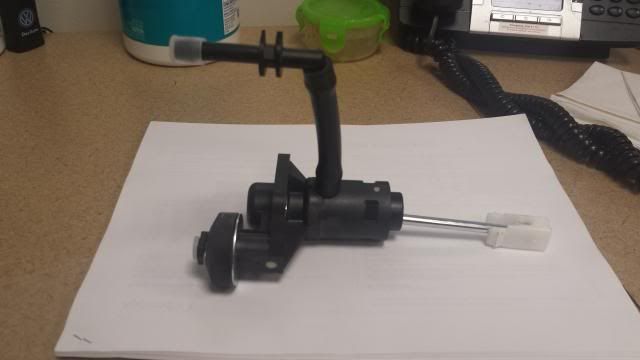
**DISCLAIMER** This article will tell you how I replaced the clutch master cylinder on my car. I do not assume any responsibility for accuracy or applicability to your situation. Read these instructions carefully and take a close look at an Audi repair manual before attempting this job on your own car. Be sure to get proper torque figures and use a torque wrench to tighten nuts and bolts. The part you are about to replace is made of plastic and will deform if not installed with some care. Follow all appropriate safety practices and remember that brake fluid is poisonous and should be disposed of appropriately.***
Brake fluid is supplied to the clutch master cylinder by a hose from the brake reservoir, which both the clutch and brakes share. When you press on the clutch pedal, the clutch master cylinder (CMC) draws some of this fluid out the exit port of the brake master cylinder reservoir through a rubber hose about 2 feet long. This fluid is forced down through a rubber/metal hose to the clutch slave cylinder located on the transmission.
The pedal-on-the-floor-defect usually can mean the clutch itself has failed, or the throw-out bearing has failed which is usually followed with some sort of noise, or that the clutch slave cylinder on the transmission has failed, which can usually be detected by leaking brake fluid or the pedal dropping to the floor immediately after pressing it, but sometimes this is not the case. Sometimes the pedal feels fine but doesn't operate the clutch properly. The engagement point could be too high, or too low, or you feel a vibration or shudder in the clutch pedal as you press or release and it may also drop to the floor. This usually signals a clutch master cylinder failure. Of course any of these symptoms guarantee that one of these items has failed mechanically.
If you try to bleed your clutch slave and zero brake fluid releases from the valve, or there is no clutch pedal pressure and it drops to the floor while performing a bleed procedure, and does not regain pressure, then most likely it is your clutch master cylinder.
Removal of clutch master:
It can be done multiple ways. You can remove the whole pedal assembly and do the dis-assembly work outside of the car, or unbolt and remove the clutch master cylinder from inside the car. Itís still a tight access job no matter which way you choose. I chose to remove just the clutch master cylinder and leave the clutch pedal assembly intact. I will explain the way I did it.
Tools required:
1. 3/8 Ratchet & extensions, 11mm open end wrench (to bleed the clutch slave)
2. A 6mm allen head socket or 6mm ball socket
3. 10mm deep or short socket
4. Long flat head screw driver or 12Ēpry bar
5. A curved end pick ( not really req. but it can help)
6. Rubber Brake line hose 2-3feet (not req. but just in case)
7. Dot4 brake fluid of your choice
8. Plenty of Rags (brake fluid is corrosive )
9. Long needle nose pliers
10. 3/8 Socket universal joint/ratchet swivel (everyone calls it something different but knows what it is)
First we will start in the engine bay area. Go to the brake master cylinder reservoir and locate the hose that feeds the Clutch master cylinder (CMC) and clutch slave line (mine is an upgraded SS line) pictured below. Your going to want to clamp this rubber hose off because your going to remove it from the firewall. I used a needle nose vice grip. Removing this hose is a major PITA and this is why I recommend buying additional hose because you may or may not be able to remove this hose from the firewall side. I ended up cutting it and using the spare hose I bought to replace this. Get your rags ready because there will be some fluid loss. Next remove the clutch slave line which is directly below it. I used a pick, and a very long curved needle nose pliers to remove the pin that secures this line. Once removed give it a good firm pull and it will come out.
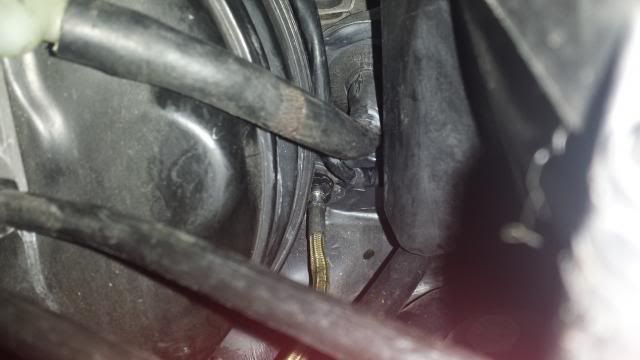


Next you will be removing the lower kickpanel under the dash. It's 3 Bolts. For this I didn't bother to take any pictures because I'm sure most of you have removed this panel at least once, but if not, here's a link from A4mods.com on how to do this:
http://a4mods.com/index.php?page=web...tml&category=4
Once your finished it should look like this....
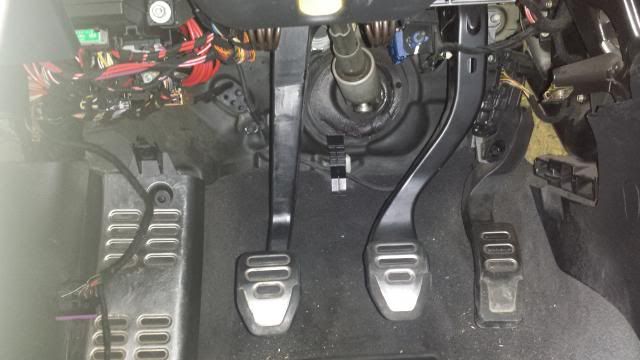
Get yourself in a good position because your work space is very limited at this point. You'll see what I mean. Locate the CMC it's directly above the clutch pedal/steering column and to the right and held in by two 6mm allen bolts and a clip. I used my ratchet, and a 6mm allen socket to get the 1st bolt out on the left. The one on the right is not so accessible and will require a swivel. You can do what I did and remove the sensor from in front like I did, it will give you way more access to the bolt, or use a ball seat allen socket.
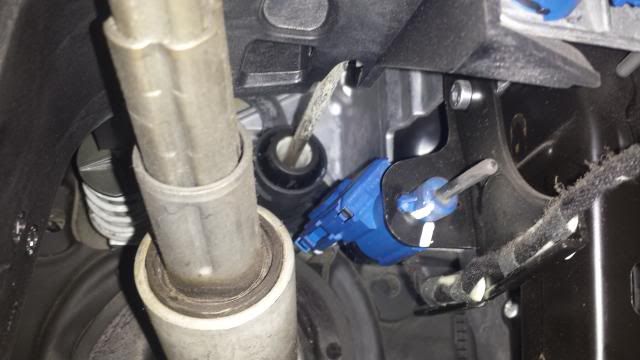
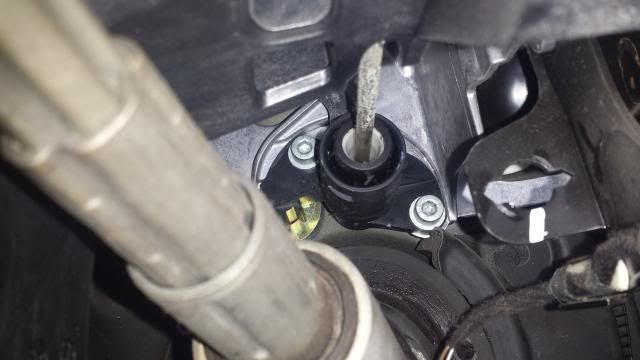
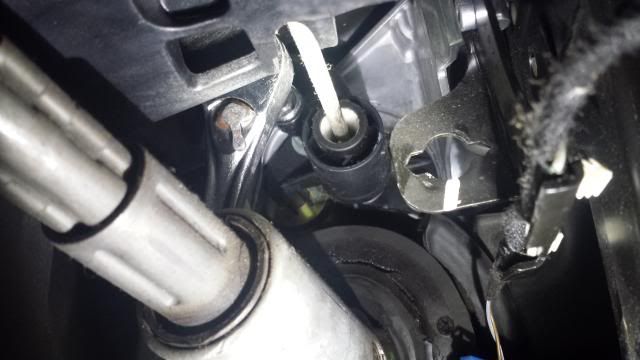
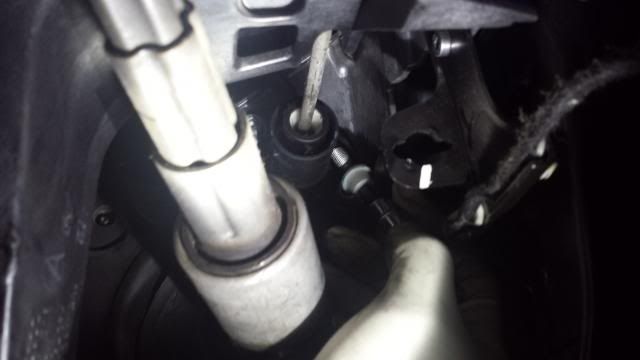
Once loosened you're still not home free. Next you have to remove the clutch pedal spring which is easily removed by hand. Simply pull the clutch pedal up to its normal position and carefully pop it out. Remember the correct orientation. This will give you the additional room you need to remove the slave itself.
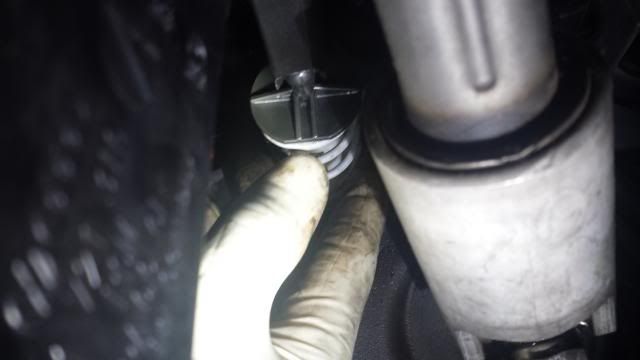
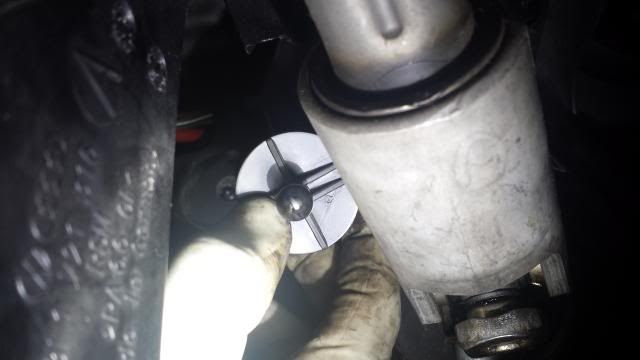

Next you will need a long flat-head screwdriver or pry bar to unseat the CMC slave line from a bracket in the firewall. This was another PITA for me and I ended up breaking it. Since you won't be reusing this that's ok and the bracket is made of metal so you don't have to worry about damaging it. In the 1st Picture, the tool on the left is what I used.

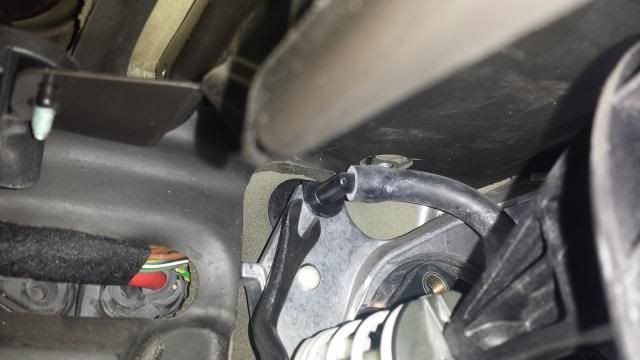
Once you free that line, the final PITA is un-clipping it from the clutch pedal itself. It will take some crafty work to get the clip pinched to remove it. For this I used a pick, a flat-head screw driver, and a vice grip needle nose pliers to pull on the rod while I pinched the clip. I ended up breaking one side of the pinch clip but again you will not be reusing and part of the old CMC. Keep the clutch pedal in the upright highest position you can while putting tension and pulling at the rod at the same time. This is why I used a vise grip aka locking pliers. It will eventually come out.
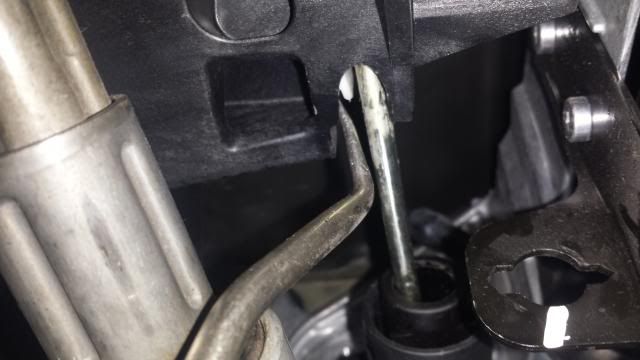

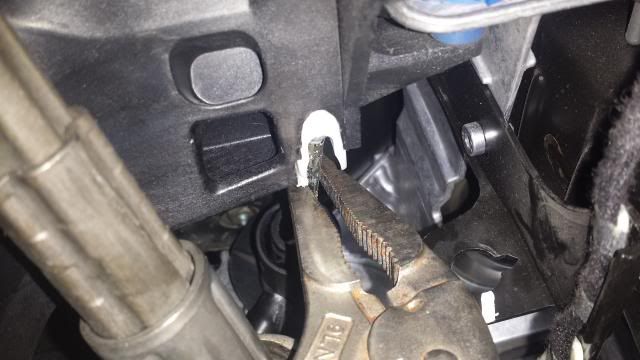
Engine bay firewall side once everything is removed.
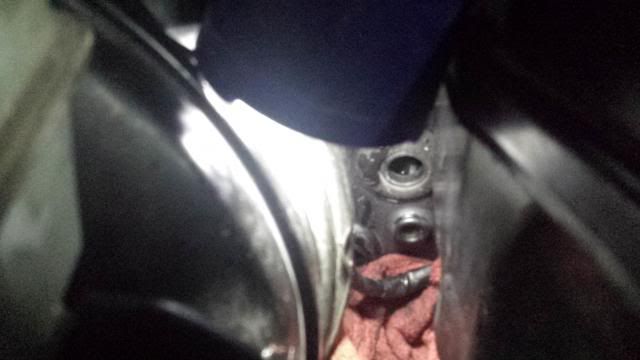
Pictures of the pinch clip for reference.
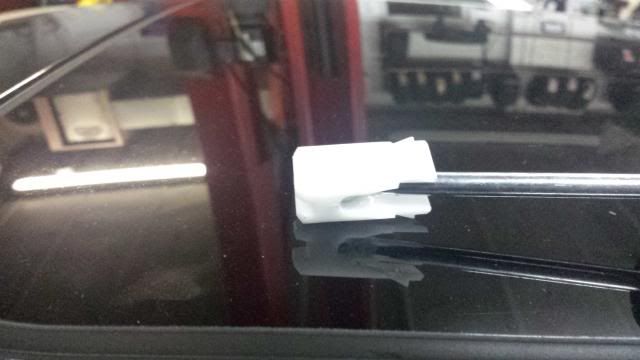
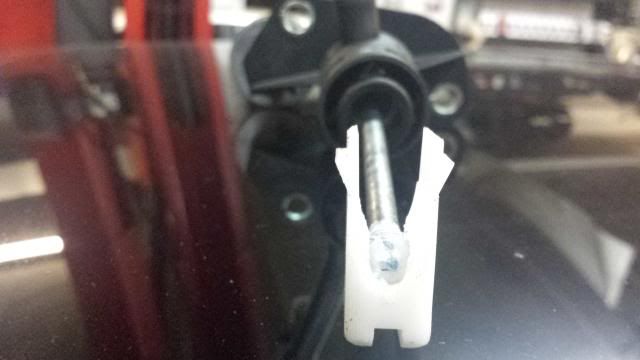
Make sure you compare the old part with the new. Remove the plastic plugs from the new CMC before you install.
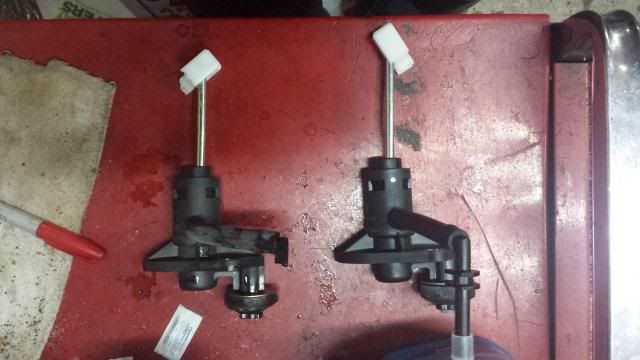
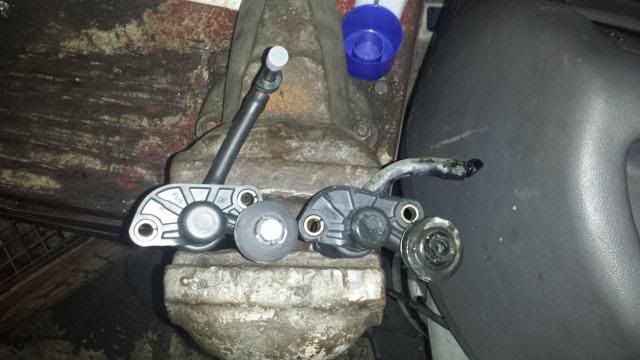
Install everything in reverse. Then top of your brake fluid and if necessary bleed your entire system or just bleed the clutch slave cylinder. Enjoy!!! and Good Luck!!!













 Reply With Quote
Reply With Quote





 Sucked major ****
Sucked major **** | RA4 Stage 1 w/SMFW | Milltek | Uni HFC/3'' DP Combo | 3'' TIP w/MAF | 550cc | TR1.8 FMIC | USP F/R | H-Sport F/R Sway | APR Snub | RS4 Motor Mounts | Stern Trans Mount | Skid Plate | Solid Tie Rod Ends | Short Shifter | Euro Shift Knob | VMR Boost Gauge | S4 F/R Brakes | Tyrolsport Stiffening Kit | ECS S.S. Lines | Hawk HPS Pads | 034 PCV
| RA4 Stage 1 w/SMFW | Milltek | Uni HFC/3'' DP Combo | 3'' TIP w/MAF | 550cc | TR1.8 FMIC | USP F/R | H-Sport F/R Sway | APR Snub | RS4 Motor Mounts | Stern Trans Mount | Skid Plate | Solid Tie Rod Ends | Short Shifter | Euro Shift Knob | VMR Boost Gauge | S4 F/R Brakes | Tyrolsport Stiffening Kit | ECS S.S. Lines | Hawk HPS Pads | 034 PCV



Bookmarks